The following exercises are from our Extensor Tendonitis rehabilitation program. We include stretching, strengthening and functional exercises. Created by elite Sports Physiotherapist Paul Tanner the full program takes you step-by-step from injury to full fitness.
Stretching exercises
The following stretching exercises are from our Extensor tendonitis rehab program.
Foot stretch
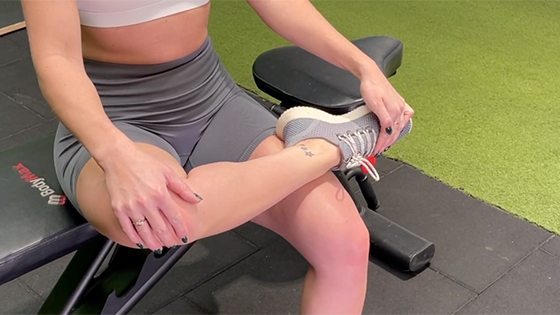
Start with your foot pointing up towards you, and use your hand to pull the foot away from you (toes pointing outwards). Add a little pressure with your hands to give the front of the foot a stretch.
Straight knee calf stretch
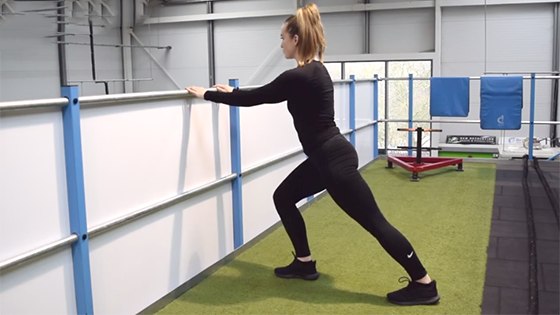
Place your hands on the wall and step forward with the foot you are not stretching, keeping your toes pointed forwards and your back heel on the ground. Lean into the wall without bending your back knee.
Bent knee calf stretch
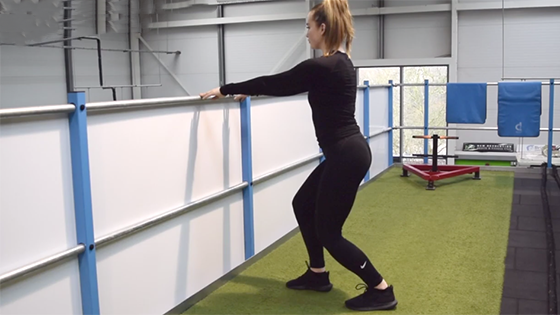
Place your hands on the wall and step forward with the foot you are not stretching, keeping your toes pointed forwards and your back heel on the ground and lean into the wall. Bend the knee and ease in to feel a stretch lower down at the back of your leg.
Hamstring stretch
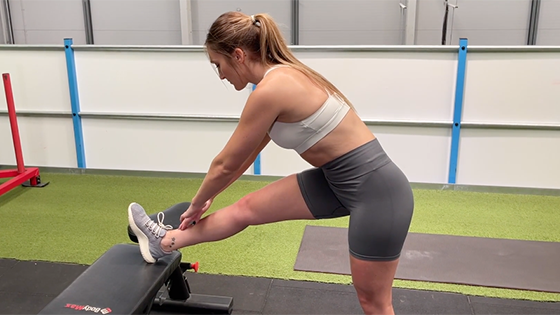
Strengthening exercises
Mid-range hold
This exercise is isometric, meaning it does not involve any movement. Use a band or manual resistance.
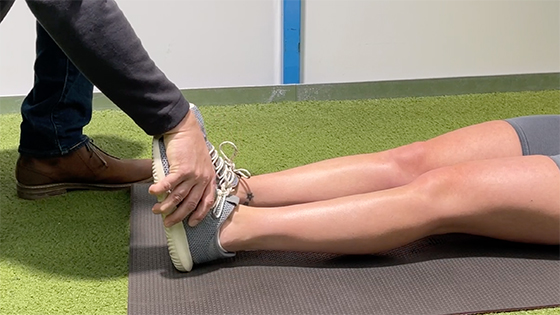
Outer range hold
This exercise is isometric, meaning it does not involve any movement. Hold your foot still as your partner pulls the resistance band.
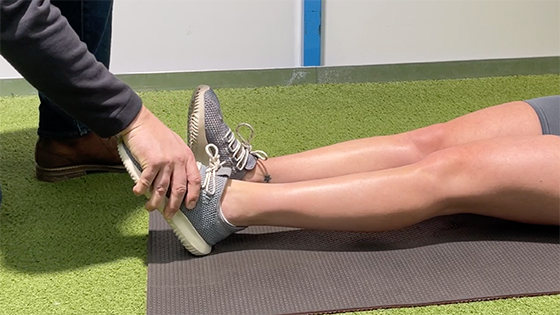
Inversion holds
Apply tension to the band and resist this movement with your foot, which should not move.
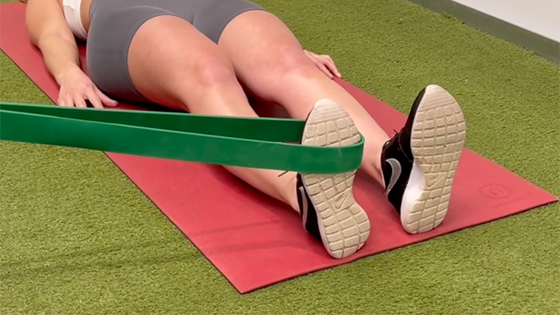
Eversion holds
Apply tension to the band and resist this movement with your foot, which should not move.
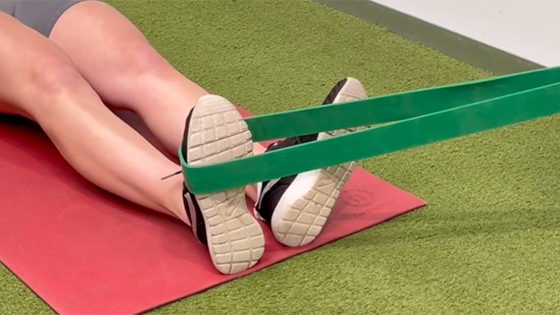
Plantar flexion
Hold the band, then pull it against a fixed foot, keeping the foot neutral and resisting the force from the band.
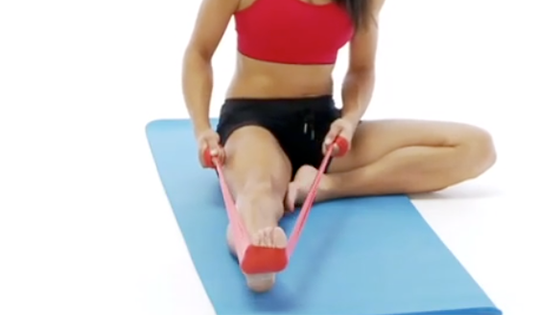
Single leg eversion
Isometric means there is no movement at the joint throughout the exercise. For eversion, turn your ankle outwards against resistance.
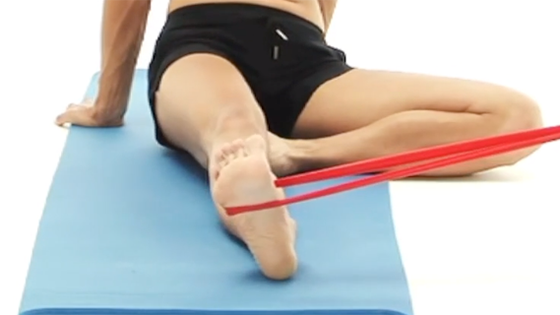
Dorsiflexion
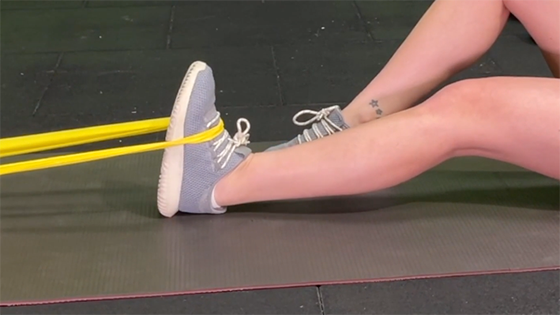
Wrap a resistance band around the forefoot and anchor it to a fixed point in front of the foot. Start with the foot pointed away and pull the foot up so the toes point to the ceiling.
Double leg heel raise
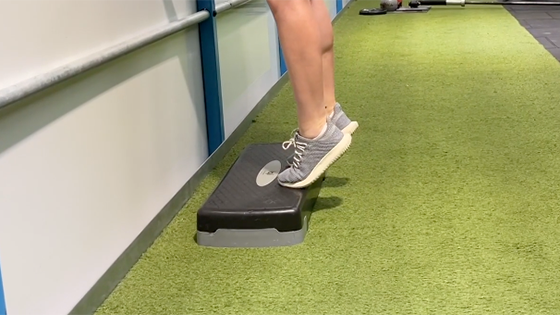
Place the balls of your feet on the step and push them up onto your tiptoes, then slowly drop down so that your heels are lower than the step or as far as comfortable.
Single-leg calf raise
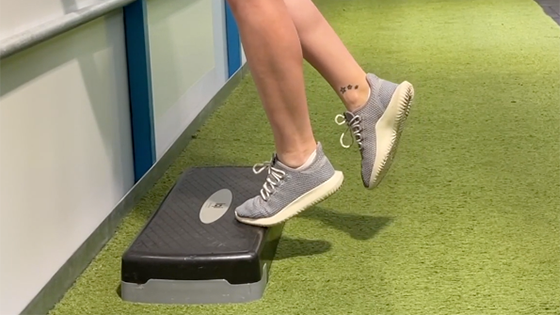
Hang off a step and keep the movement in a comfortable range. Start bodyweight, and gradually add load with dumbbells.
Bent knee calf raise
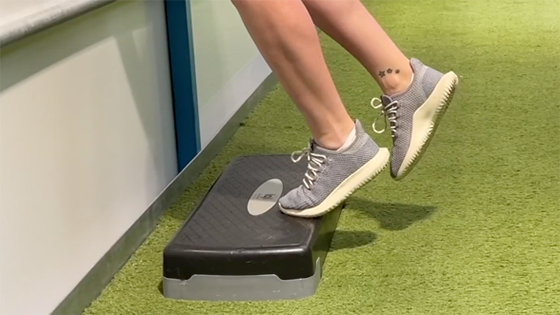
Use both legs bent at the knee. Stand on a step with the heels off the back of the step making sure you have something to hold onto for balance. Lower the heels just below the step then raise up onto tiptoes.
Heavy leg press
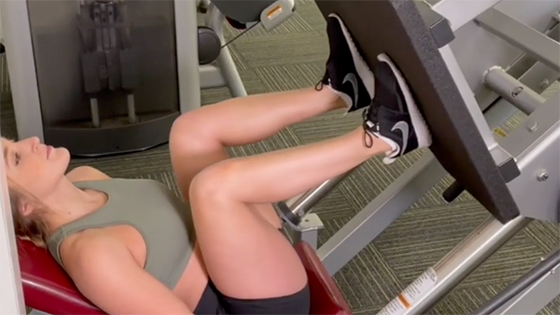
This is best done with a leg press machine, but you can do a weighted box squat as a substitute.
Perform a slow controlled leg press (no more than 90 deg knee bend), 3 seconds concentric (pushing up) and 3 seconds eccentric (lowering down). So one rep should take 6 seconds.
Squat
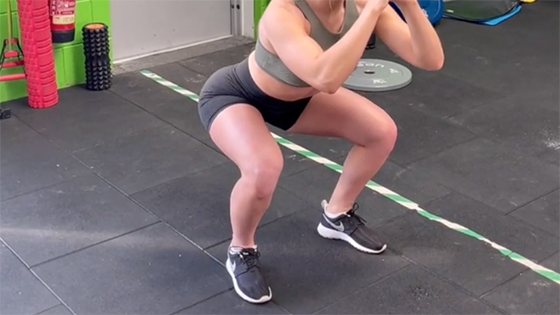
With your feet shoulder-width apart, tense your abs and sit back – make sure to move your butt backwards, don’t just bend your knees. Keep your knees in line with your toes.
Plantar to dorsi flexion with kettlebell
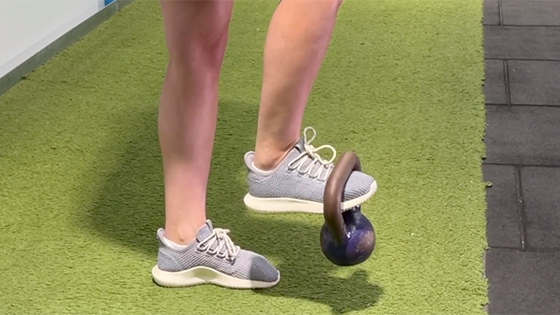
Use a kettlebell over the toes, starting with the foot on a step, and lift the foot up and down with the KB.
Kettlebell hold
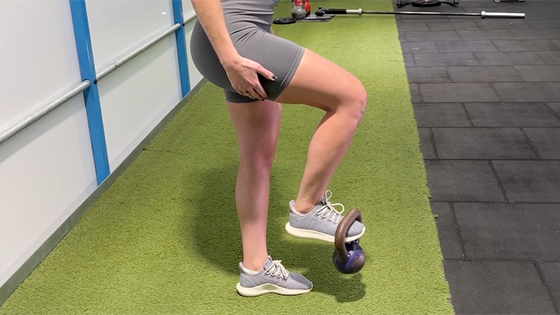
Put your toes through the kettlebell and hold in mid-position.
Tip toe walking
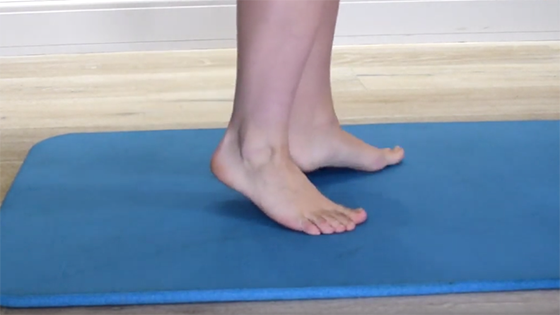
With your heels pointed inwards walk forward slowly, keeping your heels slightly off the floor. Do the same exercise going back but with your heels outwards.
Resisted dorsiflexion
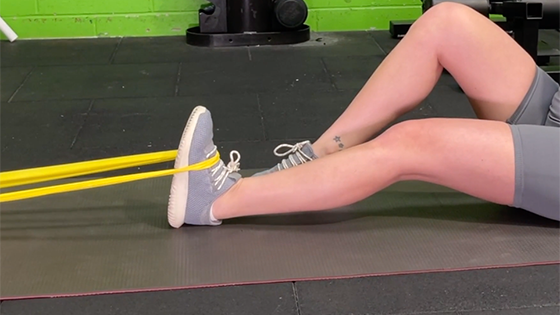
A resistance band is wrapped around the forefoot and anchored to a fixed point in front of the foot. Start with the foot pointed away and dorsiflex or pull the foot up so the toes point to the ceiling.
Eccentric kettlebells
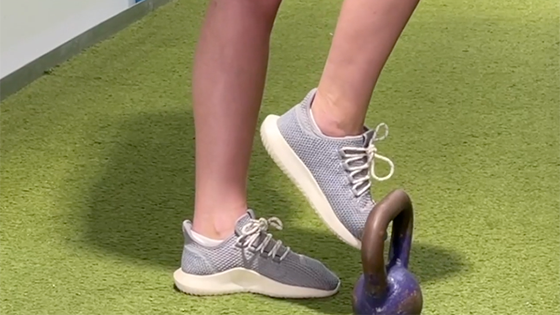
Lift the kettlebell with your foot, then lower your foot so your toes are pointing down. Drop the kettlebell to the floor, take your foot out and repeat.
High knee march with a band
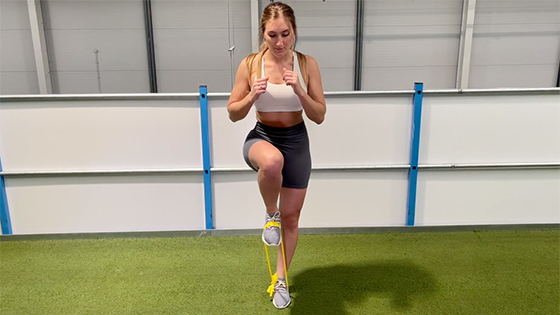
Place the band around the arches of both feet. Drive the knees up as fast as possible, keeping the foot dorsiflexed (foot is lifted upwards) throughout.
Eccentric resisted dorsiflexion
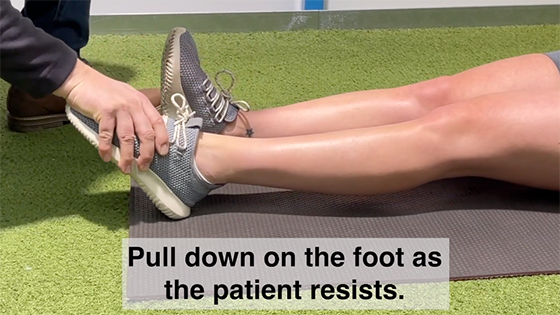
A Physio or partner pulls down on the foot as the patient resists the movement.
Movement control
Gym ball bridge
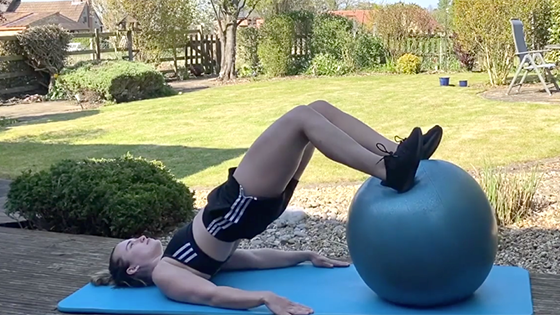
With your heels on the ball push the hips upwards maintaining control throughout.
Single leg stand
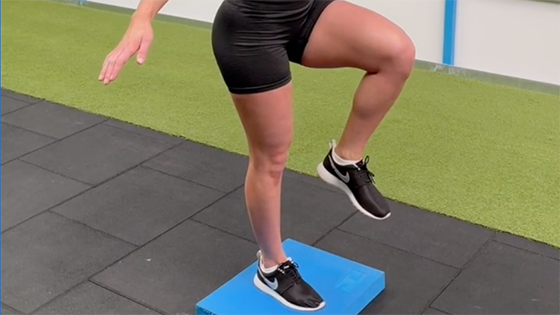
Stand on one leg for 20 seconds and repeat 4 times. If you find this too easy then close your eyes, or use a wobble board or cushion to make it even more difficult.
Walking high knee march
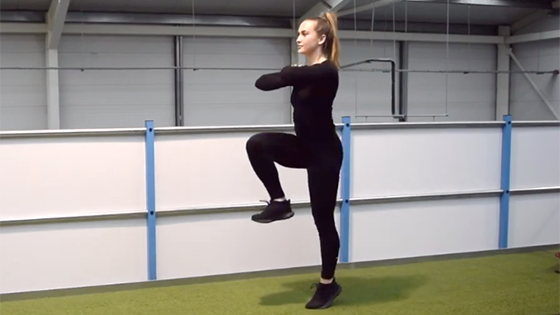
March on your toes with a good high knee lift.
A lock at wall
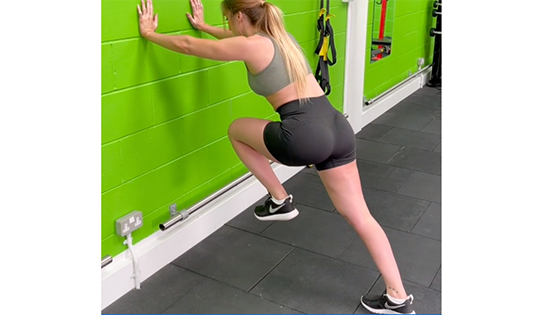
Drive the knee upwards, leaning into the wall, and take the hip up to 90 degrees. Keep the toes pulled up towards the ceiling.
Single-leg toe taps
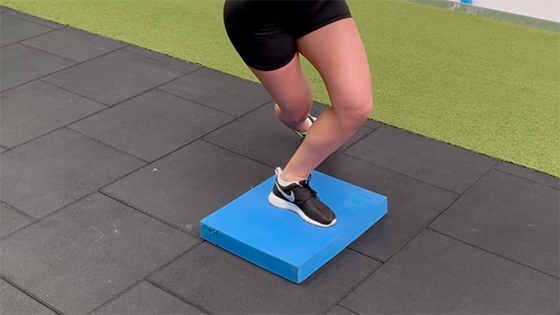
Stand on a mat, begin by raising your right foot and tapping it forward, to the side, behind you, and to the opposite side. Then, return your right foot to the mat and repeat with the left side.
Box jump to inside leg
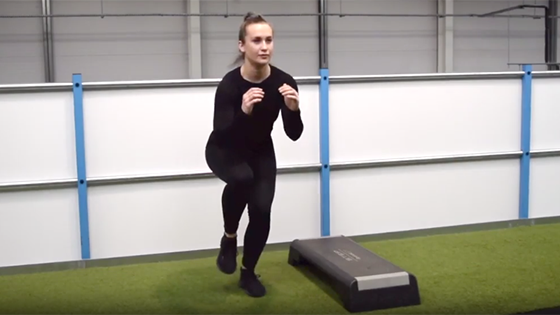
Jump off a box or step with 2 feet and land on your inside leg.
Box jump to outside leg
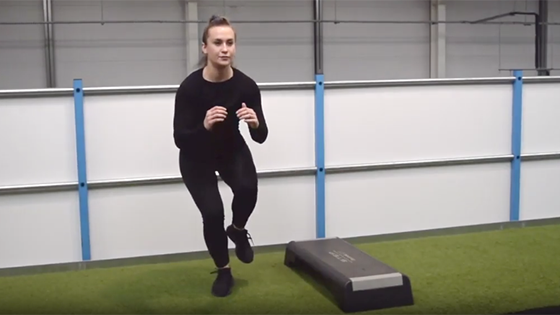
Jump off the box from 2 feet landing on your outside leg.
